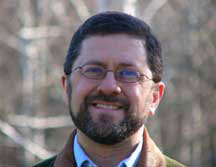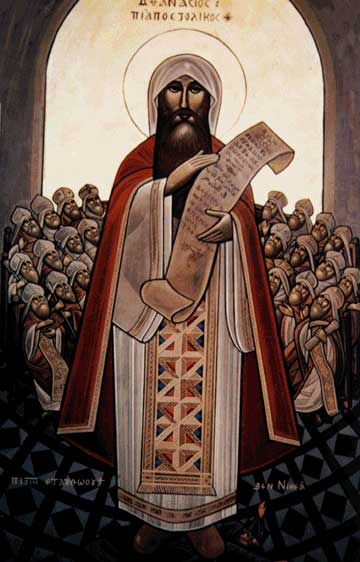St. Athanasius is one of the great Father and Doctors of the Church…the Father of Orthodoxy. His extraordinary life is shared with us by Mike Aquilina. When we say “consubstantial” at mass it’s due in part to St. Athansius and the battle against the Arian Heresy. Take a listen and learn more…
[powerpress]
More on the life of St. Athanasius from Pope Benedict at Vatican.va
GENERAL AUDIENCE
Paul VI Audience Hall
Wednesday, 20 June 2007
Continuing our revisitation of the great Teachers of the ancient Church, let us focus our attention today on St Athanasius of Alexandria.
>Only a few years after his death, this authentic protagonist of the Christian tradition was already hailed as “the pillar of the Church” by Gregory of Nazianzus, the great theologian and Bishop of Constantinople (Orationes, 21, 26), and he has always been considered a model of orthodoxy in both East and West.As a result, it was not by chance that Gian Lorenzo Bernini placed his statue among those of the four holy Doctors of the Eastern and Western Churches – together with the images of Ambrose, John Chrysostom and Augustine – which surround the Chair of St Peter in the marvellous apse of the Vatican Basilica.
Athanasius was undoubtedly one of the most important and revered early Church Fathers. But this great Saint was above all the impassioned theologian of the Incarnation of the Logos, the Word of God who – as the Prologue of the fourth Gospel says – “became flesh and dwelt among us” (Jn 1: 14).
For this very reason Athanasius was also the most important and tenacious adversary of the Arian heresy, which at that time threatened faith in Christ, reduced to a creature “halfway” between God and man, according to a recurring tendency in history which we also see manifested today in various forms.
In all likelihood Athanasius was born in Alexandria, Egypt, in about the year 300 A.D. He received a good education before becoming a deacon and secretary to the Bishop of Alexandria, the great Egyptian metropolis. As a close collaborator of his Bishop, the young cleric took part with him in the Council of Nicaea, the first Ecumenical Council, convoked by the Emperor Constantine in May 325 A.D. to ensure Church unity. The Nicene Fathers were thus able to address various issues and primarily the serious problem that had arisen a few years earlier from the preaching of the Alexandrian priest, Arius.
With his theory, Arius threatened authentic faith in Christ, declaring that the Logos was not a true God but a created God, a creature “halfway” between God and man who hence remained for ever inaccessible to us. The Bishops gathered in Nicaea responded by developing and establishing the “Symbol of faith” [“Creed”] which, completed later at the First Council of Constantinople, has endured in the traditions of various Christian denominations and in the liturgy as the Niceno-Constantinopolitan Creed.
In this fundamental text – which expresses the faith of the undivided Church and which we also recite today, every Sunday, in the Eucharistic celebration – the Greek term homooúsiosis featured, in Latin consubstantialis: it means that the Son, the Logos, is “of the same substance” as the Father, he is God of God, he is his substance. Thus, the full divinity of the Son, which was denied by the Arians, was brought into the limelight. (more…)
Tags: Church, faith, saints, St Athanasius
This entry was posted on Thursday, May 2nd, 2013 at 12:26 am
You can follow any responses to this entry through the RSS 2.0 feed.

